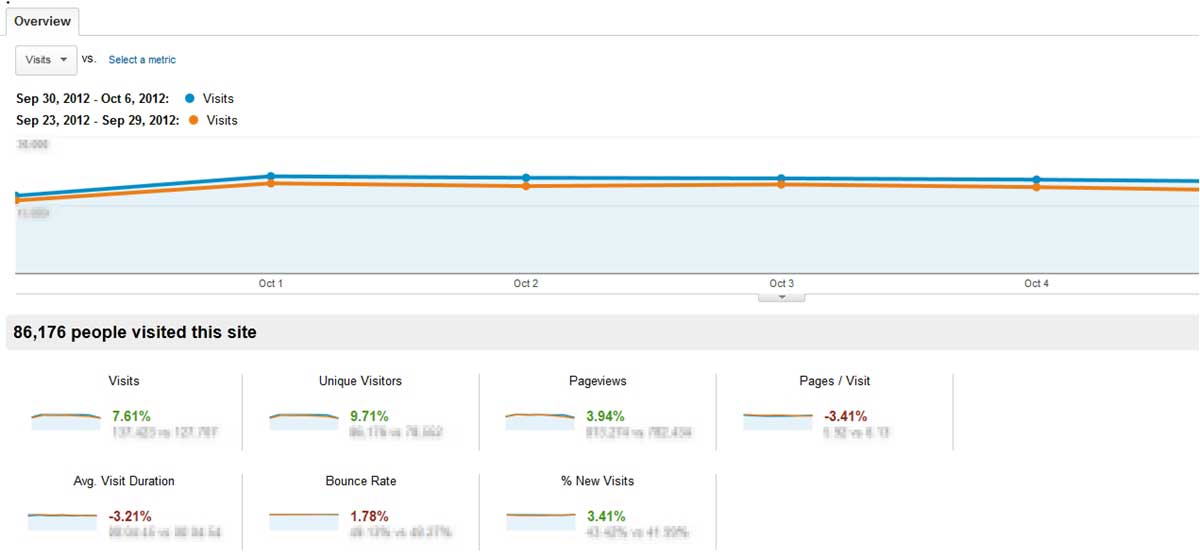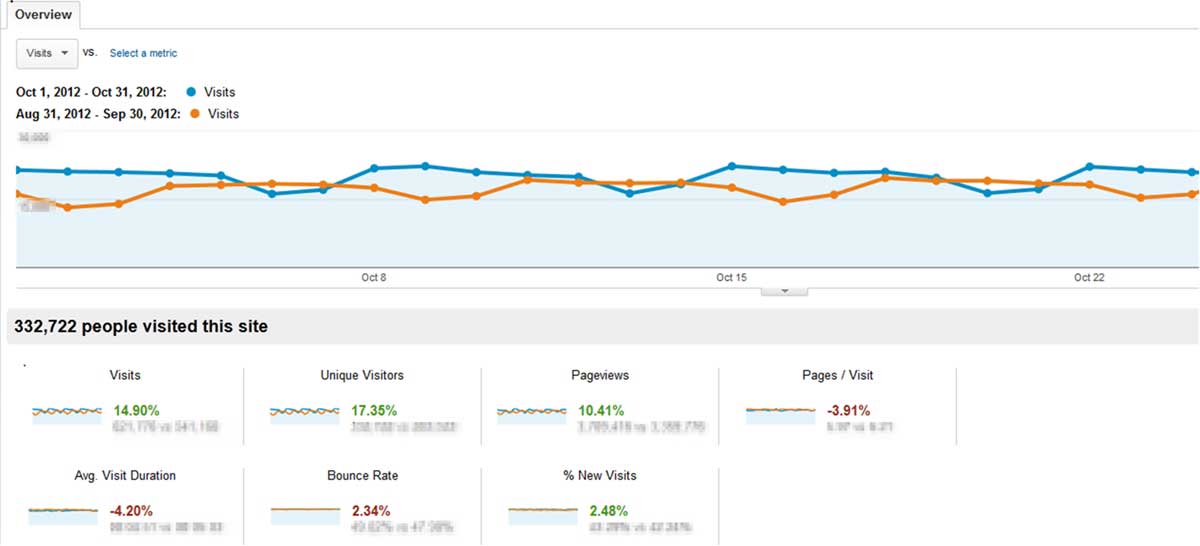For my sister's birthday, I was searching for a gift—a Sony phone, the Xperia series. I knew approximately what I needed, but not the exact model. I was surfing from page to page, unable to find what I needed, and at some point I simply lost patience.
Why? Because I landed on either the official website's pages, where they didn't sell phones, or on the pages of specific phone models, which were not what I wanted. I wanted a whole line of Sony Xperia devices from which to make my purchase.
Fortunately, that experience helped me to see a possibility that for some reason is rarely used by online stores. At my place of work, we then went on to implement such an on-page solution for our clients—and always with great success.
Here are the outcomes for one of our clients:
For a week...
For a month...
So we got...
- Traffic (visit) growth of 14.90% in just a month after the implementation
- Visitor growth of 1,500-1,800 per day
I should specify one thing: We did no link-building activities during the period mentioned. So any other site/domain/backlink stuff was not a factor to be taken into account. Those things would make all the statistics I cited invalid.
I am a big fan of "advanced" on-site optimization, and I think that the link-building stuff has to be done only after you get all the on-page things done.
So What's This All About?
Almost every online store now has the opportunity to sort the goods by some two or three characteristics: for example, brand and line ("Samsung Galax") or brand and screen size ("Asus 10 inch"). That is known as "filtering": Searchers choose only the important criteria and see the most relevant items.
Typically, such pages are either...
- closed for search engine robots (with robots.txt, "noindex" option, etc.), in order to avoid being punished by Google for duplicate content
- or completely open for crawling and indexation that generates a lot of pages with almost identical content, which is pretty bad if you want to avoid duplicate-content issues
In the first case, the content is unavailable for search engines; in the second one, it is "too available" and can cause Google to penalize the site.
We found a way that combines all the benefits (user friendliness, the ability to get more customers with high relevancy to requests) and avoids the duplication problem.
How did we achieve that?
Step by step...
1. First, you need to identify which filter groups are interesting to users. If your site has lots of traffic, that information is easy to find out after some analysis with the help of a tool like Google Analytics. If traffic is not that high, you can do your own research using the Google Keyword Tool and find which keywords are the most interesting to your users. You just need to choose from the many combinations of "brand plus specific characteristic." For example, if we talk about Samusung smartphones, two combinations might be...
- "Samsung Galaxy" (a popular series of smartphones)
- "Samsung Duos" (Samsung smartphones that can hold two SIM cards)
This process will not take much time, and the work will pay off handsomely.
2. Then, once filter combinations are found and search queries for them are selected, you need to optimize the relevant pages. You need to work the queries into the following:
- Title
- H1
- The text of the page
Do not constrain the text with just two main words (for example, Samsung Duos). For best results, you should use other words in the list, such as "touch" and "price comparison," and specify the locations where you deliver your products, and so on. All those will maximize the result by getting good rankings for long-tail keywords.
In addition, we strongly recommend our clients use user-friendly addresses like site.com/mobile/samsung-duos, but not the all too typical (alas) old-generation-CMS-like URLs such as https://www.site.com/index.php?option=com_virtuemart&page = shop.browse & category_id = 13 & Itemid = 1. The former is good for users and still gives a slight advantage for good positioning on Google.
3. And third, an important step is the internal hyperlinking of such pages. They should be easily found both by users who were originally visiting other pages of the site and by search engine robots. If, say, a few product lines, brands, etc. are very popular, you can enter the URLs of filters for each page of a particular product.
For example, if users are interested in some popular series of Samsung Galaxy phones, you can link from the landing page of the Samsung Galaxy S III phone to others. For the same purpose, you can post news and reviews on the site. For example, if there is a new model released, you can place a link of the page in the news section to the entire line of Samsung Galaxy phones. There are a lot of options, so do not be afraid to invent a new one.
Accident prevention
How can you avoid the duplicates problem?
- All title tags, H1 tags, and content should be absolutely unique. Remember that you are doing it for your customers in the first place—to make it easier to find your products among others in Google searches, as well as on your site.
- A very important rule is that you open for indexation only combinations of two (rarely three) filters. For example, "Asus 10 inch tablets" has three type filters (brand, product type, and diagonal size), and if you have no open filter landing page, such as for "Asus 10 inch," it won't kill your site but it is a little risky.
In the majority of cases, we use only two characteristics for landing pages, and one of them is usually a brand (e.g., "Samsung Galaxy"). Yes, I would like to include more (3-4, for example) characteristics, but the result is the problem of duplicates that we are unlikely to resolve. - We try to bind filters first to brands. Of course, the filters and the Samsung Galaxy/Samsung Duos will match simply by virtue of the name, so we try to compensate for that "uniformity" by providing text that varies.
Where Is This Method Applicable?
This method is applicable whenever users search for products on more than one characteristic (although you can use, of course, filters like "Samsung" or "Rolex"). It is especially good in areas where there are strong brands: household appliances, electronics, watches, perfumes, expensive clothes and shoes, jewelry, etc.
It can be used (and very efficiently!) in local markets, where users add cities, districts, or even countries as a modifier.
We experimented and achieved success with several electronics stores, sites, watches, and even tires in niches where competition is very high now.
The main message that I would like to emphasize: Even in utterly banal optimization methods, you can find something new—something that will differentiate you from competitors and will increase visitor numbers and sales.






